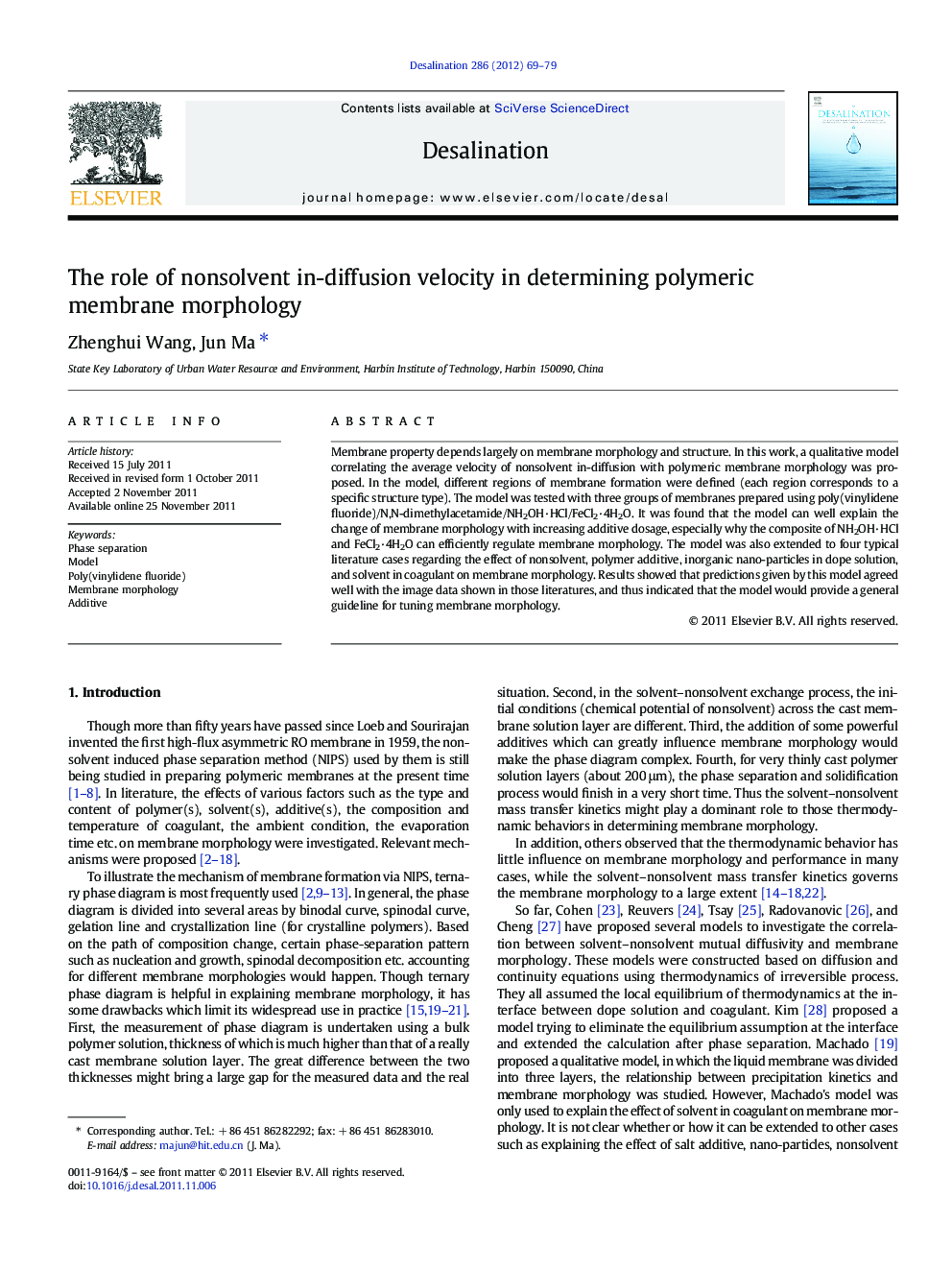| Article ID | Journal | Published Year | Pages | File Type |
|---|---|---|---|---|
| 624492 | Desalination | 2012 | 11 Pages |
Membrane property depends largely on membrane morphology and structure. In this work, a qualitative model correlating the average velocity of nonsolvent in-diffusion with polymeric membrane morphology was proposed. In the model, different regions of membrane formation were defined (each region corresponds to a specific structure type). The model was tested with three groups of membranes prepared using poly(vinylidene fluoride)/N,N-dimethylacetamide/NH2OH·HCl/FeCl2·4H2O. It was found that the model can well explain the change of membrane morphology with increasing additive dosage, especially why the composite of NH2OH·HCl and FeCl2·4H2O can efficiently regulate membrane morphology. The model was also extended to four typical literature cases regarding the effect of nonsolvent, polymer additive, inorganic nano-particles in dope solution, and solvent in coagulant on membrane morphology. Results showed that predictions given by this model agreed well with the image data shown in those literatures, and thus indicated that the model would provide a general guideline for tuning membrane morphology.
► A model regarding membrane morphology formation was proposed. ► The model correlates nonsolvent in-diffusion velocity with membrane morphology. ► Mixture of NH2OH·HCl and FeCl2·4H2O can efficiently tailor membrane morphology.
